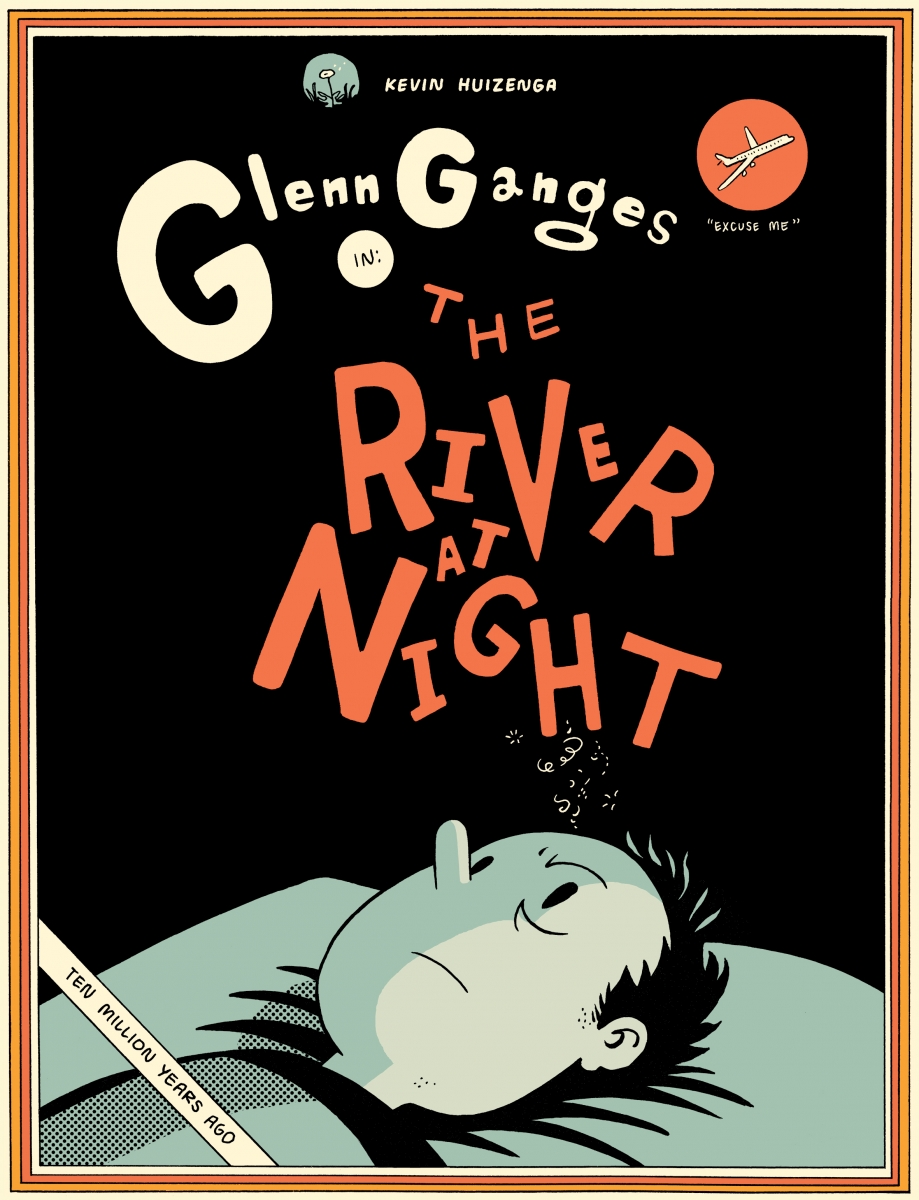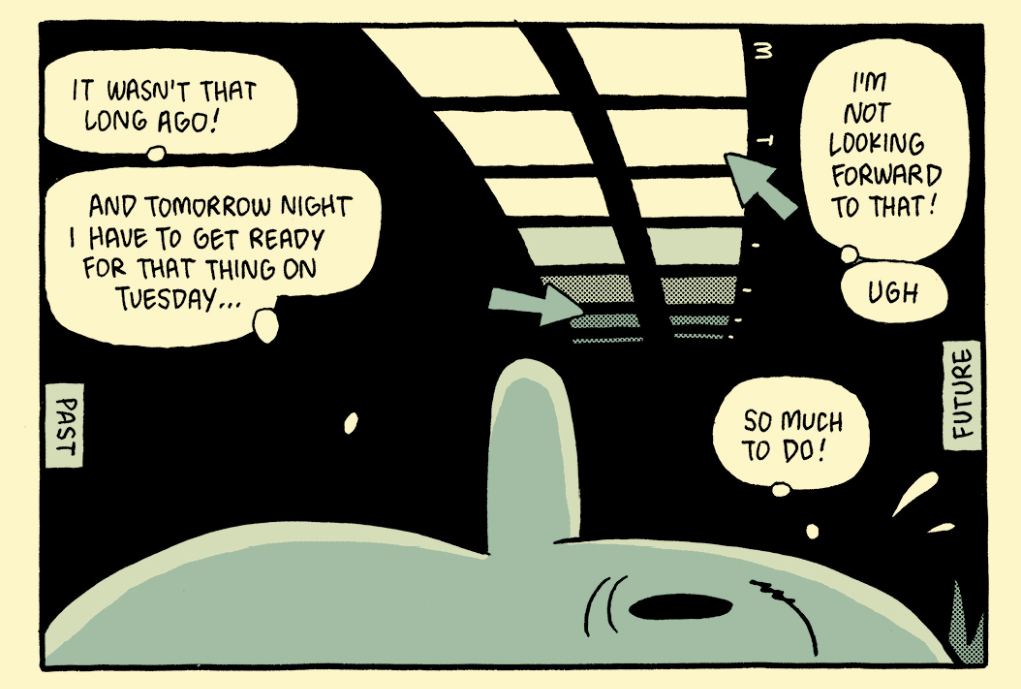
In the early ’90s, Kevin Huizenga drew comics, Xeroxed them at Jewel-Osco, and handed them out for free at his high school in South Holland, Illinois, a few miles west of Calumet City. Then he discovered Quimby’s, the Wicker Park bookstore and center of Chicago’s small press, zine, and comics culture since 1991. “It changed my life,” Huizenga says.
Tonight, Huizenga, 42, stops by his hallowed haunt to celebrate the release of his latest book, The River at Night, starring his everyman protagonist Glenn Ganges. The graphic novel connects a series of linked stories that take place over the course of a single episode of caffeine-induced insomnia, as Glenn revisits memories and imagines fantastical worlds.
Graced with gorgeous lines that recall the suburban grids of Illiana, The River at Night is alternately surreal and mundane, profound and silly. Today, Huizenga splits his time between Chicago and Minneapolis, where his cat began vomiting as soon as we spoke over the phone.
Did Chicago influence your writing or drawing style?
Well, I grew up in the Illiana region, right on the border of Indiana, and I think those suburbs got into my blood. That landscape meant a lot to me. Even though I was pretty far from Chicago, I could wander into this railroad switchyard and right down the track, you could see downtown Chicago just sticking up on the horizon. It gave me a sense of distance and history and how it was all connected.
When did you first start drawing?
I started out drawing superheroes in high school but then pretty quickly got out of it. Then I was very influenced by John Porcellino and Chris Ware, so my friends and I started making our own comics not knowing that other people were doing it. We were kind of sheltered in the suburbs. We were just making up our own comics and Xeroxing them and distributing them at school. But then in 1992 or 1993 we took our comics to a record store and saw all these other self-published zines and mini-comics.
What is your writing and drawing process?
I’ve been doing it for a long time, so it’s evolved. But in general I shoot for four to six hours a day. I shoot for not having the internet at hand. My ideal is a university library with big windows and a lot of space — plenty of books around to distract the mind in a way that’s more useful than the internet. I draw with paper and ink and then I scan it and do the finishing touches and tones on the computer. When I get stuck, I usually go back to something that’s already on the page and I just repeat it and try to carry it forward. For instance, in this book almost everything appears more than once, which ties in with motifs of mirrors and doubling and spiraling. The one constant is that sometimes what I really want to do is just sit and listen to music. Writing comics is almost just a byproduct of wanting to sit and listen to music. And then I have to do something with my mind and a pen. It hasn’t changed much since the late ’90s. I don’t plan too far ahead.

How much of The River at Night was planned out and how much was improvised as you were working?
It was a mixture, because even when you’re playing jazz, you’re usually improvising within some kind of structure: chord structure, modal structure, rhythm structure. Same thing with comics. The best way to go is to make some decisions about structure and then improvise within that. I generally write out a brief script, but it’s only there to get me going. And then once I’m going, I’m just trying to keep it moving toward “good.” Its less like making a plan for a building or being an architect, it’s more just following your instincts.
The protagonist of this book, Glenn plays a lot of first-person shooter games. Is that something you do too?
That’s based on when I worked at a company back in the early 2000s and we played after hours, and then later I played Team Fortress 2 quite a bit. Nowadays I describe myself as “video game sober.” I enjoyed it a lot, but in the long run I feel like it was … not a waste of time, but it takes up a lot of time. The part of it that really appealed to me was playing on a team and feeling like I was helping strangers. I really had a good feeling when I helped my teammates score. I suppose that’s the kind of thing that would also happen if you were involved in more tangible pursuits of helping people in the world. I think that might be a better way to go.
Does your mind often wander in the same way Glenn’s does?
I don’t think any more or less than the average person. Once you see it on the page, I’ve had people tell me it’s a common experience. It could have been the shower. Maybe I’ll do a book centered on someone’s experience in the shower. It’s definitely easier to draw. Or driving. I could do that, but I’d have to draw cars.
Details:Wicker Park. Quimby’s. October 4 at 7 p.m. Free. quimby’s.com.



